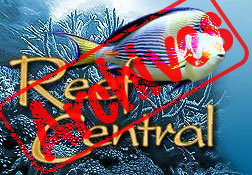

|
|
|
#1
|
|||
|
|||
|
Upside-Down Jellies reproducing
Well I tried to post this in the invertabrate forum and so far no one has replied. If someone could offer help on how to raise the baby jellies until they are old enough to invert their bell and rest on the sand I would appreciate it! They have been breeding in my tank for quite some time now and they end up getting eaten or sucked into a powerhead. They are about the size of a pin-head maybe a little bigger, I have also located the hydroids that are producing them. Do they have a powerful sting? Please if anyone has any experience in raising baby jellies chime in.
Thank you, Mike
__________________
Don't take life too seriously, nobody gets out alive anyway. |
|
#2
|
|||
|
|||
|
dont believe they have a powerful sting. They are phototrophic rather than stinging and eating prey. I suggest putting them in glass bowls with a bubbler and replacing with fresh salt water daily.
|
|
#3
|
|||
|
|||
|
Mike,
What are commonly called Upside-Down Jellies and common hydroid babies are not the same thing. Hydroids do pop off a motile phase, but they don't become upside-down jellies, and generally the hydroids we have in our tanks are not something we want to culture. Kevin
__________________
NCAA Division 1 Championship Leaders: UCLA: 100 Stanford: 94 Southern California: 84 Oklahoma State: 48 Arkansas: 43 LSU: 40 Go PAC 10! |
|
#4
|
|||
|
|||
|
Kevin, they are definatly jellyfish. The "hydroid" is a clear white structure that has white tentecles coming from them. The jelly is light tan with brown bands and stubby tentecles clumped together. I am definately thinking these are indeed caseopias.
__________________
Don't take life too seriously, nobody gets out alive anyway. |
|
#5
|
|||
|
|||
|
Well I got my fishbowl just need to buy a bubbler now and hopefully we shall see!
__________________
Don't take life too seriously, nobody gets out alive anyway. |
|
|